Braces Care
It is important to maintain a clean mouth at all times, but it is even more important to do so throughout your orthodontic treatment. The care you take today will ensure a beautiful smile forever. This means that special care must be given to your teeth and your gum tissue. We will show you in detail how to take care of your braces, teeth and gums, and we will provide you with written instructions when you leave our office to help you remember.
Poor oral hygiene can result in permanent “marks” or “scars” on your teeth, due to plaque build-up. These “marks” or “scars” are referred to as decalcification, which is actually the onset of DECAY, and can begin to appear within as little as two weeks of exercising inadequate oral hygiene habits.
Tartar control toothpastes are essential. Flossing on a daily basis is also crucial and can be done using “floss threaders”. Thread the floss into the loop and pass the threader between the teeth under the wire. Hold onto one end of floss and pull the other end through. Floss between the tooth and gum (each space has 2 teeth). Pull straight out when finished. Threaders can be reused. Floss threaders are available at larger drug stores in the dental care display.
Also, your family dentist is an important part of your oral healthcare team. We recommend that you visit your dentist every four to six months throughout your treatment.
What to Expect with Braces
You may find that your teeth will be tender during the two or three days after you get your braces on. The wire that is attached to the brackets on your teeth applies pressure to your teeth and starts moving them. Nature helps the teeth loosen to relieve the pressure, but there is temporary discomfort while this happens. Gradually, the fibers that support the teeth in the bone get stretched and squeezed. After about three days, the teeth feel much more comfortable..
At each appointment, the process is repeated. However, because the teeth are loosened from their original position, each new adjustment is easier and little or no discomfort follows.
Advil may be needed for some patients over the first few days, because the teeth will be tender. It will be more comfortable if you maintain a softer diet, such as pasta, soups and soft sandwiches.
The lips, cheeks and tongue may also feel irritated for a few days as they toughen and become accustomed to the surface of the braces. Warm salt-water rinses can be used along with wax to protect the area. This wax will come off with eating, brushing or drinking cold drinks. Sugarless gum can be used at the back of the mouth if you have run out of wax.
You may notice throughout your treatment that some of your teeth seem to be loose. They are, but don’t worry! In order for teeth to be moved, they must be loosened. Eventually, your teeth will again become firmly fixed in their new and corrected positions (and will stay there with the help of your retainers).
During orthodontic treatment, situations sometimes arise that require a repair to be made to your appliances. We have assigned specific times within our schedule to resolve these issues, and will only see patients who have called ahead to book an appointment. When our offices are closed for vacation, we arrange for another orthodontist to provide urgent care to patients who may require it.
Please see the next section for a discussion of some of the repair conditions that may arise, and how to make yourself comfortable until your scheduled repair appointment.
Tools & Supplies
With these tools and supplies on hand (most of which you may already have), you will be prepared to handle the most common orthodontic emergencies.
- Non-medicated orthodontic relief wax
- Dental floss
- Sterile tweezers
- Small, sharp clipper
- Q-tips
- Salt
- Interproximal brush
- Toothpicks
- Non-prescription pain reliever (acetaminophen or ibuprofen supplied by the student’s parent/guardian—use only with written permission of the orthodontist and parent/guardian)
- Topical Anesthetic (such as Orabase or Ora-Gel)
Irritation of lips/cheeks due to braces
Protruding Wire
Loose Wires, Brackets or Bands
A Bracket is Knocked Off
Brackets are the parts of braces attached to teeth with a special adhesive. They are generally positioned in the center of each tooth. The bracket can be knocked off if the student has eaten one of those hard or crunchy foods orthodontic patients are instructed to avoid, or if the mouth is struck while at play. We encourage all students, especially those with braces, to wear a protective mouth guard while playing sports.
If the bracket is off center, the adhesive may have failed. Call the parents—and recommend that they immediately notify the orthodontist, who will determine the course of action.
If the loose bracket has rotated on the wire and is sticking out, and the patient cannot immediately be taken to the orthodontist, you can do a temporary fix to alleviate discomfort and prevent further damage. But take care to prevent swallowing or other injury.
To put the bracket back in place, use sterile tweezers to slide the bracket along the wire until it is between two teeth. Rotate the bracket back to the proper position, then slide it back to the center
of the tooth.Mouth Sores
Discomfort
Food Caught Between Teeth
Broken or loose elastic chain
Discomfort
- Tooth movement – as your teeth start to move, you may experience some discomfort/pain. Most cases, it is easily tolerable and subsides in 2-3 days. If severe, take Tylenol 2-3 times daily for next 2-3 days.
- Scratches/Ulcers – Lips and cheeks may scratch against braces causing cuts or ulcers. Usually lips and cheeks get used to the presence of braces in about 1-2 weeks. To help you tide over- please use the wax provided and place it over the brace that offends. This wax may stay on the brace for 1-2 days, after which you may have to replace it again. Don’t Worry wax is not harmful, if swallowed.
- Poking wires – Initial wires may shift in your braces resulting in slight excess at the back of your mouth- such excess may poke your cheek and may cause discomfort. Wax may not stay on it. Use sterile cotton in that area while sleeping, if it happens at night. Call us and come in the office for one of our doctors to look at it and trim it (if necessary)
- Blue colored bite tabs (if used) – may cause some discomfort for 1-2 weeks while chewing. It is because they prevent any contact between some of your back teeth. It is done to protect your upper teeth hitting your lower braces and knocking them off. Please eat soft food to tide over this period. Don’t worry- you will get your bite back in a few weeks.
Avoid breakage of braces
- Avoid biting on hard foods such as apple or carrot. Chop them into small pieces and eat gently from your back teeth.
- Avoid whole nuts (sliced almonds are ok), corn on cob, candies, chewing gums, hard crusty breads.
- Avoid chicken/meat with bones. Munching on bones is a big no.
- Remember when you eat hard food- you crack the glue and the brace may not come off at that time. Usually the brace becomes loose after that when you eat soft food such as a banana, bread or while drinking milk.
- Eat soft and mushy food such as rice, pasta, noodles, soft bread, soft boneless chicken, soup etc.
Brush and Floss Properly
- Brushing- use any brush and brush over your braces, covering 3 braces at a time. Don’t be harsh, be gentle and brush for long time. Don’t brush hard, brush long and thorough. Brush on the outer surface, top surface and under surface of braces. As you clean your braces, your teeth get cleaned too. Remember- Nobody can brush with in a minute. It takes 4-8 minutes to brush around your braces properly.
- Flossing- Please floss around your teeth regularly in the morning and evening before bed. Please follow the instructions as given by our staff.
- Please watch some videos on brushing and flossing on youtube.com.
- In case of doubt, please contact us.
Looseness of teeth
Treatment Progress
- The most important variable for success of your Invisalign treatment is your compliance to wear the aligners as instructed. Aligners need to be worn at minimum 22 hours per day, without exception. This includes faithful wear of rubber bands, if indicated, during treatment.
- Your aligners will be changed on a weekly basis, unless otherwise notified by the doctor.
The most important indicator of your readiness to change into your next aligner is the
overall fit, or passiveness, of your aligners.
Your aligners should have no visible space seen between the edge of the teeth, and the
aligner itself, when you are ready to change. The aligners should always fit tight over the
teeth, so no space is visible at the edge of the teeth. If a gap exists, aligner chewies
should be used faithfully until the aligner fits properly.
DO NOT TRANSITION TO YOUR NEXT ALIGNER UNTIL ALL GAPS BETWEEN THE TEETH AND THE ALIGNER ARE RESOLVED.
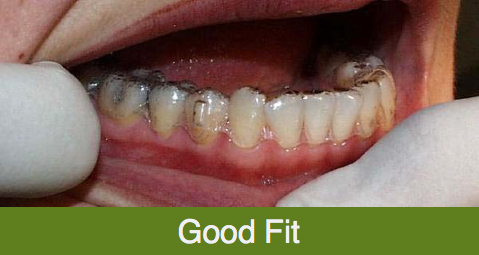
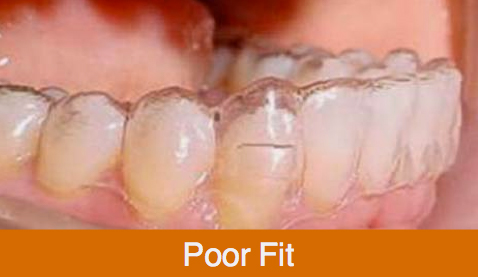
To use the chewie, bite down and hold in the area where the aligner needs to fit better for 5 seconds, then release. Repeat this process for 10 minutes at a time, up to three times per day, until the gap is reduced.
**If you have a history of TMJ, do not use the chewies, but instead use steady figure pressure to push the aligner in place instead, always making sure not to put pressure on you lower jaw if the problem is on the lower teeth. - Use your elastics as prescribed. These elastics provide additional gentle forces to move your teeth along with the forces generated by the aligners.
Caring for your Invisalign aligners
- Never eat or drink anything but water with your aligners in place– milk, juice, pop, coffee, Gatorade etc may contain sugar that goes between retainers and teeth. This sugar is used by bacteria present on your teeth to produce acid. This acid causes cavities on almost all your teeth within 3 months.
- When eating or drinking, remove your aligners and place into the case provided for safe keeping. Do not place your aligners in your pocket or napkins as this will lead to accidental damage or discarding of the aligners.
- Brush the inside of the aligners carefully after every meal. Aligners should be “crystal clear” at all times. If aligners are cloudy, this is an indication of plaque accumulation, which can be extremely damaging to the teeth, leading to scarring/decalcification and cavities of your teeth.
- Brush the inside of the aligners with toothbrush and COOL water, or with baking soda and water
- If you do not have a sulfa allergy, denture cleaner may also be used in addition to brushing the aligners to keep them extra clean. Place the aligners in cool water with a denture cleaning tablet to soak for 15 minutes. Remove the aligners when time has passed, brush and rinse out the aligners before placement back into your mouth.
Other tips
- If you have a rough spot on your aligner, gently use an emery board to smooth out the area
- If your aligner becomes lost, cracks, etc after one week of wear, it may be OK to move into your next aligner. However, please call our office to confirm if this is OK.
Carrier Appliance
- There are 2 fixed (upper bars and lower studs) and 2 removable (elastics and lower retainer)
components.
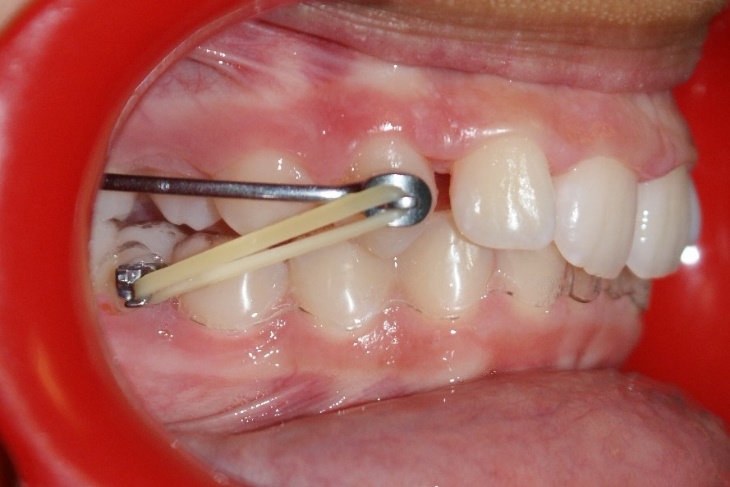
- Avoid breakage of bars and studs
- Avoid biting on hard foods such as apple or carrot. Chop them into small pieces and eat gently from your back teeth.
- Avoid whole nuts (sliced almonds are ok), corn on cob, candies, chewing gums, hard crusty breads.
- Avoid chicken/meat with bones. Munching on bones is a big offender.
- Remember when you eat hard food- you crack the glue and the bar may not come off at that time. Usually the bar becomes loose after that when you eat soft food such as a banana, bread or while drinking milk.
- Eat soft and mushy food such as rice, pasta, noodles, soft bread, soft boneless chicken, soup etc.
- Wear elastics 22 hours per day– they are ineffective otherwise.
- Always keep your lower retainer on while wearing the elastics- NEVER WEAR ELASTICS WITHOUT THE LOWER RETAINER. Your lower teeth may shift in an unwanted position.
- Do not eat or drink with your retainer:
- Do not eat with your retainer.
- DO NOT DRINK ANYTHING BUT WATER WITH YOUR RETAINER– milk, juice, pop, coffee, Gatorade etc may contain sugar that goes between retainers and teeth. This sugar is used by bacteria present on your teeth to produce acid. This acid causes cavities on almost all your teeth within 3 months.
- Spaces will open up between your upper front teeth- DON’T PANIC- Such spaces are good. They indicate good movement of the upper back teeth. We want these spaces. Keep going.
Microimplants
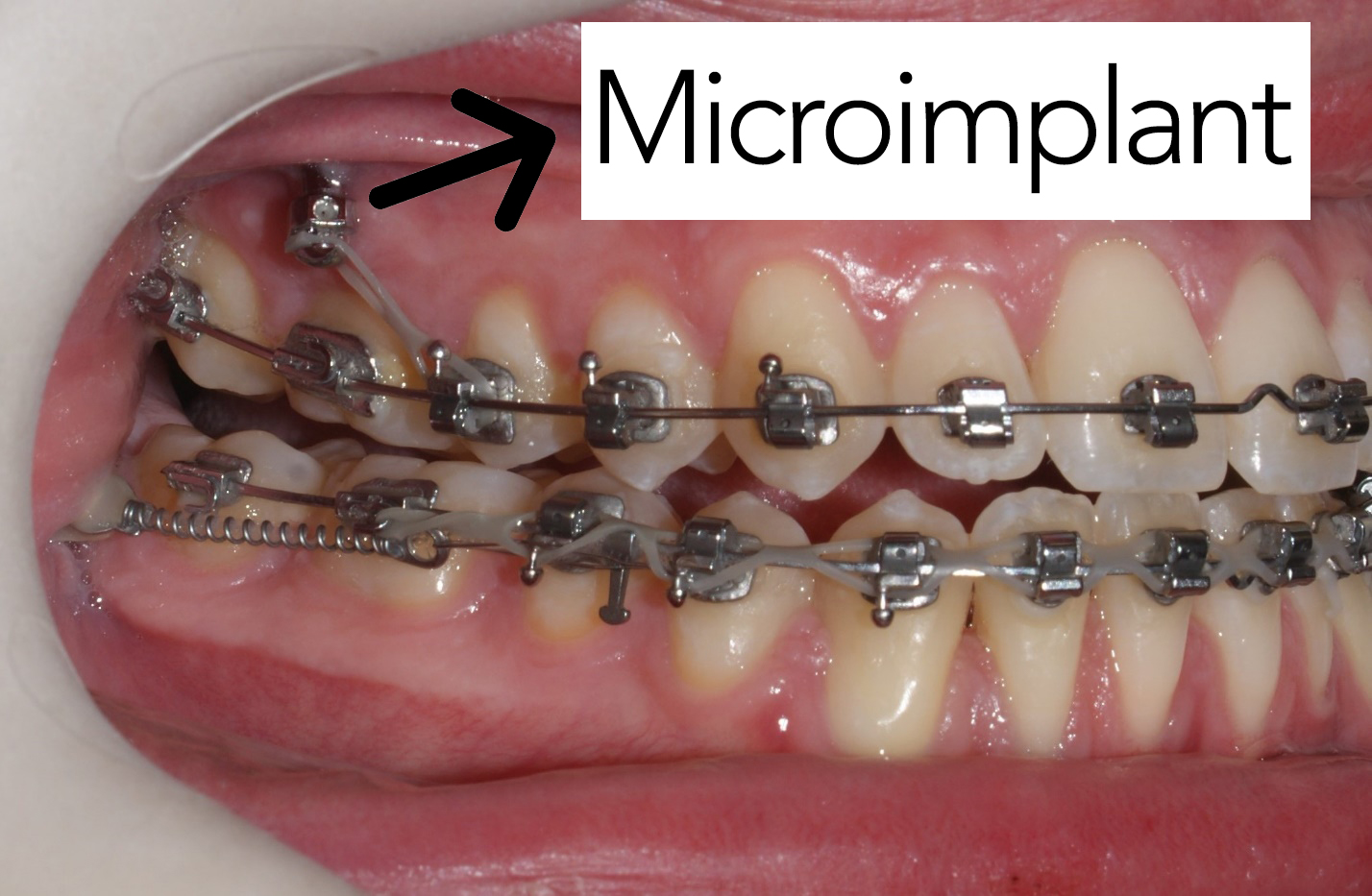
In addition to your braces/aligners, Dr Singh may use tiny screws/ microimplants to assist with some complex teeth movements otherwise not possible.
Please understand the following:
- Keep the gums and soft tissues around the implants clean- otherwise gum swelling may render
the implant loose.
- Brush the area around the micro-implant gently and do not allow any plaque/debris build up.
- Use warm water with salt to rinse your mouth every night to keep the gums healthy around implant.
- Do Not feel the implant with your finger or tongue. Repeated touch/irritation of the implant may result in implant getting loose and may fall out.
- These implants may cause mild discomfort on the day they are placed. This discomfort subsides after a few hours usually without a painkiller. However if the discomfort persists on 1 st day, please take a routine Advil (Ibuprofen 400mg) (if there is no contraindication/allergy).
- Contact us, if the pain increases or the implant becomes loose.
Twin Block Appliance
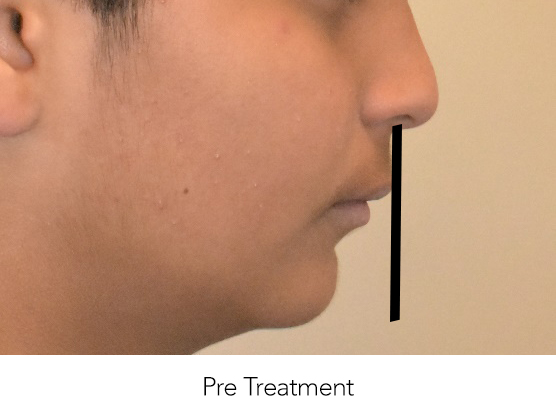
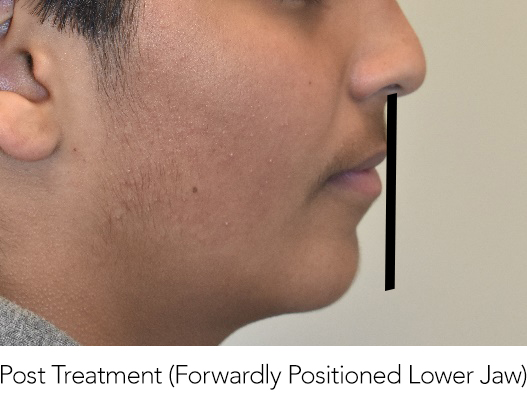
In some cases, with smaller and backwardly placed lower jaw- we use a special growth modification appliance called the Twin Block appliance. These appliances are comfortable to wear but need some adjustment period. Such an appliance is carefully custom made for your child’s jaws (after carefully making distortion free molds) and after we have carefully recorded the bite. Needless to say, that such appliances are made:
- Customized to your jaws
- According to specific scientific principles of recording bite
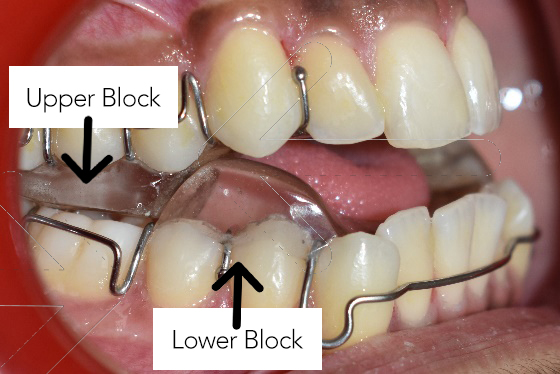
Please keep these appliances safe and understand the following:
- To get used to the appliance- please wear it for 2-3 hours for a week, through out the evening and night for another 2-3 weeks and full time (22 hours/day) there after.
- Since, these are specific blocks of plastic in your mouth and they even cover your palate, your child’s speech will get affected for first few weeks. Encourage your child to speak with the twin blocks on every evening. Ask them to read a book loudly. This will help them get their speech back quickly.
- There may be some drooling for first few days. This is our body’s response to a new/foreign object in mouth. Excess saliva formation will stop in a few days.
- If the appliance gets loose, please contact us to retighten for you. Do not attempt to retighten it yourself at home. You may break the sensitive components of the appliance. We will any way schedule you every 8 weeks to retighten the appliance and monitor the progress.
- Brush your appliance every day in the morning and night using your toothbrush and cool water. Do not boil it. If needed, use some baking soda and then brush it.
- When you take it out to eat/brush, please provide them in the case provided so you don’t damage them or risk losing them.